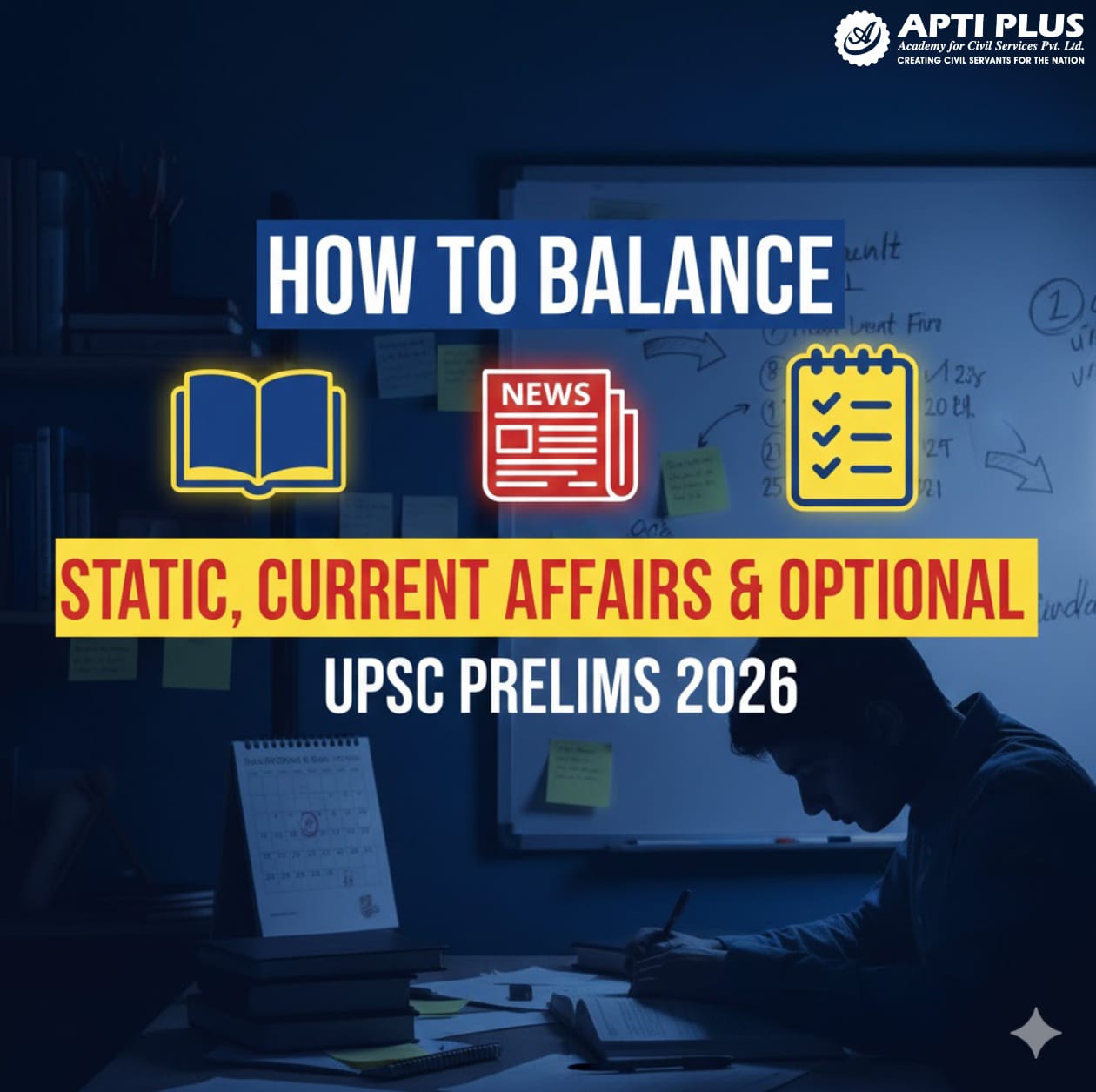
November and early December offer a rare reset window for UPSC aspirants.. nearly 6–7 months before Prelims 2026 and more importantly, three golden months (November–January) that determine the quality of your Mains fundamentals. Whatever aspirants build in these 90 days sets the rhythm for a dominating Prelims preparation till May and a confident return to Mains afterward.
At this stage, the right question is not how much to read, but how to prioritise between static subjects, current affairs and the optional, so that both Prelims and Mains are strategically covered.
Why Prioritisation Matters: Follow Exam Logic, Not Instincts
The UPSC syllabus is vast and abstract. It provides the outline, but not the exam’s real emphasis areas. Aspirants often rely on intuition and end up spreading themselves thin.
The clarity comes from Microthemes--a PYQ-driven, concrete breakdown of the syllabus into actionable, high-priority themes.
Across GS1–3, there are:
- 15 GS subjects
- 300 plus total Microthemes
- From which UPSC has asked 2+ questions in the last 10 years
- And 200 plus Microthemes are Mains-specific
This Microtheme approach tells aspirants exactly where to focus and prevents random studying.
How to balance Static, Current Affairs and Optional
- Static Subjects: The Anchor of Prelims (and a Major Part of Microthemes)
Static subjects still form 70–75% of Prelims GS Paper I.
But more importantly, they form the foundation of most Microthemes.
How to prioritise static now
- Complete The Big 4 solidly: Polity, Economy, Geography, Environment
(these alone take 3–4 months of serious foundation building)
- Finish one full cycle of major subjects by early February
- Use PYQs to define depth, not guesswork
- Stick to a consistent ratio:
3 hours static : 1 hour current affairs
If aspirants have repeatedly missed Prelims, they should begin the Prelims transition by late December itself.
- Current Affairs: Prepare Theme-Wise, Not Date-Wise
UPSC no longer rewards excessive newspaper collection. It rewards integration--linking current events to static concepts.
How to handle current affairs now
- Study weekly, not daily
- Consolidate current affairs Microtheme-wise, not chronologically
- Limit daily time to 45–60 minutes
- Focus on conceptual linkages, not trivial facts
Daily newspapers help only if they suit your natural rhythm. If not, stick to weekly and monthly modules.
- Optional Subject: Build Serious Momentum Before January
Your optional drives almost half of your Mains score.
The November–January window is the best time to build depth.
How to prioritise optional effectively
- Keep one fixed daily slot for optional (ideally afternoon)
- Complete at least 60–70% of the syllabus before Prelims
- Build notes, solve PYQs and revise every week
- If Mains is your weak point, use these three months to close that gap -- this window will not return.
Microtheme Strategy: Could be a Game-Changer for 2026
Your November–January Targets
- Cover the Mains-specific Microthemes
(At a pace of 2-3 Microthemes per day → 90 days = themes completed)
- Attempt one full round of tests across all 15 GS subjects
- Keep optional steady
- Maintain weekly current affairs themes
- Enter January with all Mains basics strong
From January onwards, shift to a Prelims-first mode covering:
- Prelims-only Microthemes
- Intensive MCQs
- Multiple full-length tests
Ideal Weekly Breakdown for the Coming Months
- Static Subjects: 55–60%
- Optional Subject: 20–25%
- Current Affairs: 15–20%
- MCQs + Revision: Daily (minimum 1 hour)
Customise Based on Your Weakness
- If Microthemes feel heavy, focus first on those from which UPSC has asked 5+ questions.
- If you have missed Prelims repeatedly, shift to Prelims mode by late December.
- If Mains is the weaker stage, use Nov–Jan to build content -- this 90-day window won’t come again.
Ideal Weekly Study Breakdown (Prelims 2026 Focus)
- Static Subjects: 55–60%
- Current Affairs: 15–20%
- Optional: 20–25%
- MCQs + Revision: Daily (minimum 1 hour)
This structure ensures Prelims readiness while building a strong base for Mains.
Avoid These Common Mistakes
- Overloading on current affairs and ignoring static.
- Postponing optional preparation till after Prelims.
- Studying without PYQs--losing track of UPSC trends.
- Not revising regularly, leading to “read but forgotten” syndrome.
- Treating Prelims and Mains preparation separately.
The Winning Strategy in the Remaining Months
- Make static subjects your anchor.
- Keep current affairs light but consistent.
- Prepare optional subject steadily to avoid panic post-Prelims.
- Follow a weekly schedule, test yourself often and revise relentlessly.
Conclusion
Aspirants who are targeting UPSC Prelims 2026 must follow a structured, exam-logic-based approach. Prioritise static subjects as the anchor, handle current affairs through Microthemes and build serious momentum in your optional subject before January. The November–January window is your biggest advantage so use it to build Mains fundamentals, then shift aggressively to Prelims preparation.
A balanced, disciplined strategy now ensures a confident Prelims attempt and a strong Mains performance later. This is the pathway to cracking UPSC 2026.




